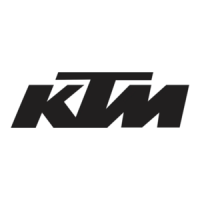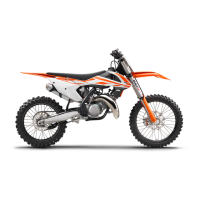What to do if my KTM Motorcycle engine turns but does not start?
- DDebra HernandezAug 15, 2025
If your KTM Motorcycle engine turns over but fails to start, several factors could be at play. It could be an operating error, so ensure you're following the correct starting procedure. If the motorcycle has been stored for a while, old fuel in the float chamber might be the culprit; in this case, empty the carburetor float chamber. Also, inspect the spark plug; if it's oily or wet, clean and dry it, or replace it if necessary. Check the spark plug electrode gap and adjust to 0.60 mm (0.0236 in). Inspect the socket connector or ignition coil and clean the plug-in connector and treat it with contact spray. Finally, water in the carburetor or blocked jets can prevent starting, so check/set the carburetor components.


